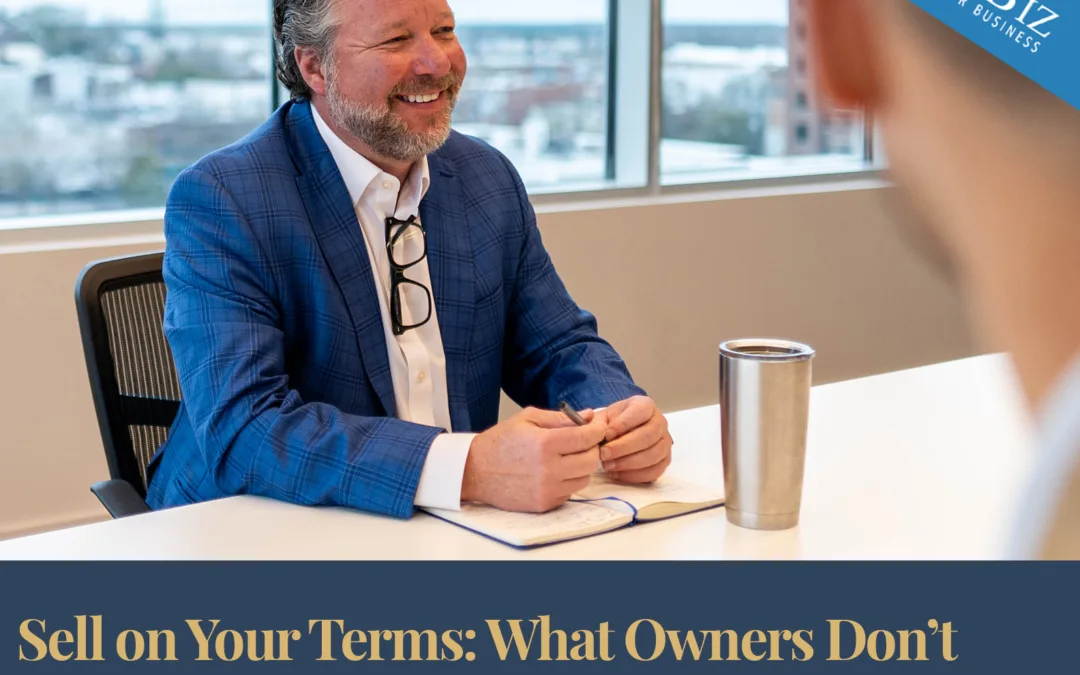In my last column, I asked “What Will Your Press Release Say the Day After You Sell?” I understand that it may be hard to picture selling your business – you’re not alone. Many business owners are too entrenched in the day-to-day running of their businesses to have time to think that far down the road. But there are other reasons that it is hard to visualize your exit: Even with a potentially lucrative payout on the horizon, many business owners are not ready to hand over the keys.
A few months ago, I got a call from a wealth manager who wanted to get me on board to help his client who had discussed selling his manufacturing business. I drove a couple hours to spend the day with the business owner: I toured his facility, learned about how he founded and scaled the company into a $30 million operation, and we discussed what comes next.
When we first started talking, he said he was ready for a change and wanted to sell. But the more we talked, it became clear that he was not really ready for a clean break. For one thing, he was in his mid 50’s and still wanted to work. He couldn’t imagine getting up the day after he sold and not going into work; he did not have a next project or new direction in mind. He also expressed concern for his employees’ future and felt an obligation to continue working for their sake.
This is a familiar story. Deciding to sell a company you founded is one of the hardest choices an entrepreneur will ever face so selling a business is rarely a quick decision. I typically engage with owners years before they go to market. I start by providing an accurate, thorough valuation of the business and setting expectations for the sale. But I also ask a lot of questions about what a business owner wants from the sale.
What I really want business owners to know is that selling their business is not an all-or-nothing proposition. When it comes to selling a successful business, the business owner has the leverage to set terms that suit their life goals. It comes down to finding the appropriate buyer and structuring the deal.
For the owner who doesn’t want to hand over the keys and walk completely away, but still take some ‘chips’ off the table, there are many ways to structure the deal:
- Long-term employment agreement – Staying on in same capacity or as an advisor
- Earn Out – receiving additional payments for achieving revenue or ebitda targets over time
- Equity Rollover – taking partial ownership in the buyer’s company, continuing to build value, with the ability to take a ‘second bite of the apple’ later when the buyer sells.
Typically, successful acquisitions and mergers involve a combination of options, designed to meet the owner’s goals and the buyer’s needs. With the right buyer, an owner can secure liquidity as well as continued involvement.
When working with an experienced M&A advisor or broker, a deal can and should be customized to support the seller’s goals. An M&A advisor also understands what type of buyer is best suited for the purchase and the desired outcome.
Private equity companies, for example, often prefer and target companies where the founders will stay on and reinvest alongside them. In fact they will pay a premium for it. Once a business owner is ready, my role as an advisor is to line up those buyers, manage a confidential process, and ensure owners only move forward if terms truly fit their vision for life after the sale. I remind my clients that there is a negotiation process and they do not have to sell unless the terms are favorable.
If you are considering selling your business (or if you have a business owner client who may be thinking about selling), the best place to start is to have a simple conversation. The initial conversation should not be about multiples or contracts, but about what you want your life to look like the day after you sell. From there, we can design a strategy and deal structure that makes sense and target potential buyers that will accept our terms.
See this article on WilmingtonBiz

